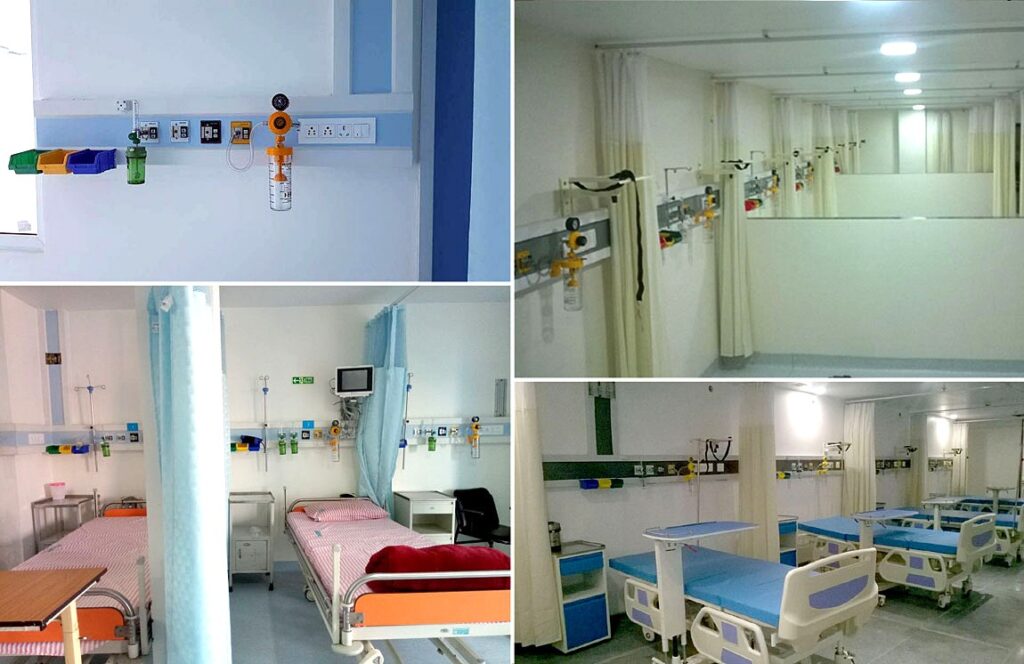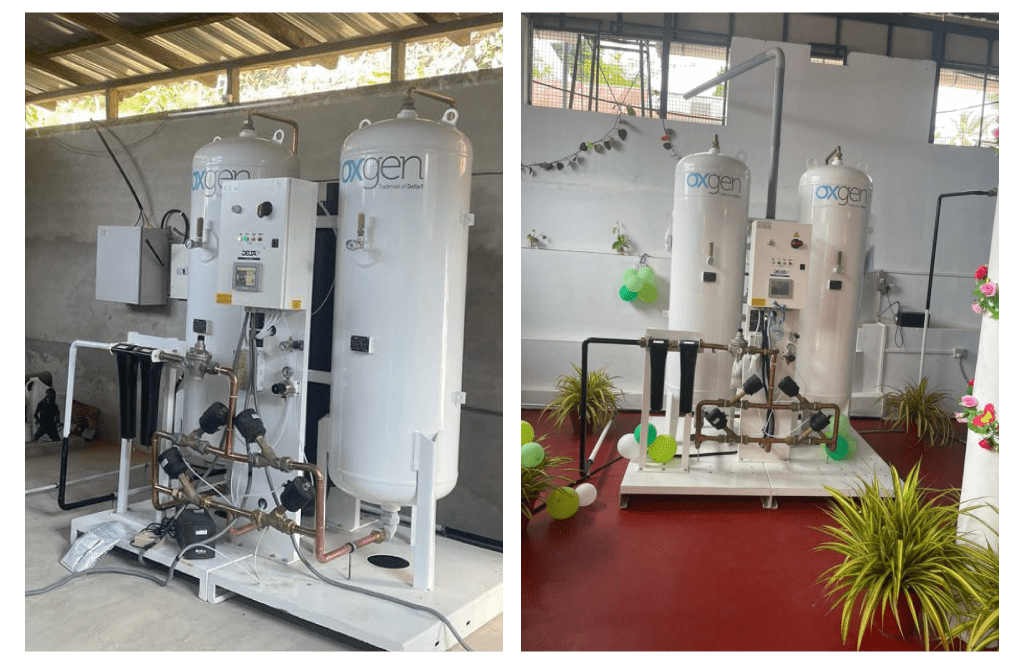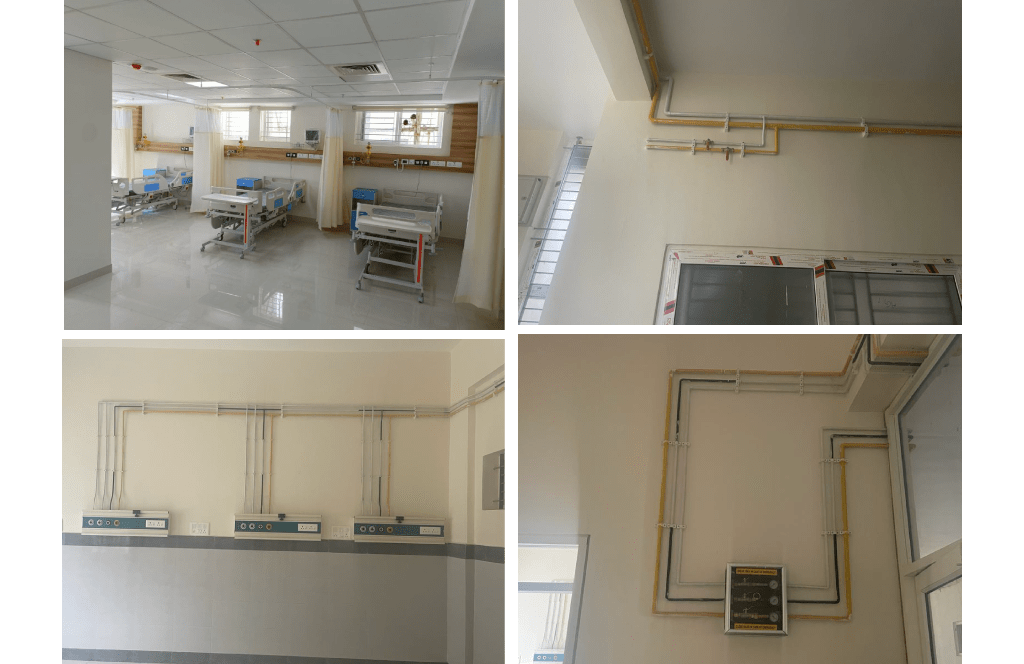About
Helix offers a medical gas pipeline system along with a complete range of accessories for the piped gas distribution of oxygen and other essential gases in the hospital. We promote complete solutions with a no frills policy, providing time tested devices which are cost effective. We have successfully set up medical gas pipeline systems over the last 20 years in many major hospitals and medical institutes. Our thrust is on quality in the materials we use- pipes as well as accessories. We support our customers with efficient after sales service and maintenance.
Medical gas pipeline systems Pipeline systems for compressed medical gases and vacuum


Any good Medical Gas Pipeline System should ensure with the following:
- Non-interchangeability between different pipeline systems by design, installation and testing
- Continuous supply of gases and vacuum at specified quality, pressures and specified flows by providing appropriate sources
- Use of suitable materials
- Cleanliness of components
- Provision of monitoring and alarm systems
- Correct marking of the pipeline system
- Testing and commissioning
- Spot check & monitoring the Quality of the gases delivered by the pipeline system
- Correct operational management
- Quality of the gases delivered by the pipeline system
- Safety features of the sources to ensure the quality of the gases according to specification
Needless to say, the design and installation will impact the function and performance of the Medical Gas Pipeline system, so it is of paramount importance that this is conducted at the highest quality standards. The complete responsibility involves design, installation operational guidelines and also verification of the installation. This may sometimes be done by one single agency or different agencies depending on the capability and specialization of the agency. It is normal to follow the rules laid out in the country and follow standards as recommended by these rules. Throughout the world, the ISO 7396 if the most popular standards which is followed in most countries for the design, installation and verification of piped medical gases and anaesthesia scavenging systems. The HTM 2022 & NFPA standards are the next popular standards which are also followed in some countries.
As stated in NFPA 99 Sec. 4-3.1.9.1, “The medical air compressors shall be designed to prevent the introduction of contaminants or liquid into the pipeline by: (a) Elimination of oil anywhere in the compressor, or (b) Separation of the oil-containing section by an open area to atmosphere, which allows continuous visual inspection of the interconnecting shaft”. There have been cases where non-medical grade compressors have been installed in hospitals which can create oils, water, and toxic oil breakdown products to mix with air.

Water is the most common contaminant found in medical air lines and is perhaps the most insidious of the contaminants found. It can also cause some of the most costly damage to secondary equipment. Water, unlike particulate, can pass through particulate filters and make its way into anaesthesia machines, ventilators, other commonly used secondary equipment, and the patient as well. The presence of water can also provide the medium for bacterial growth. Water located in medical air lines which are subjected to low temperatures can freeze and occlude gas flow. Water can also facilitate the oxidation of the copper piping inside the medical air line. Don’t assume the air compressor being used for your facility is suitable for medical grade air. The possibility of oil contamination has resulted in hydrocarbon monitoring requirements.

